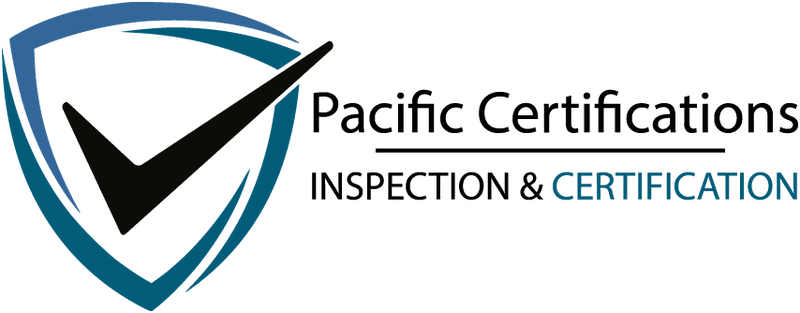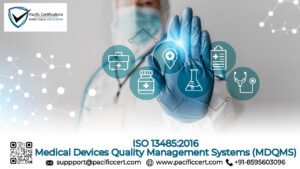
What is ISO/IEC 19770-1:2017-Information technology — IT asset management — Part 1: IT asset management systems
ISO/IEC 19770-1:2017 provides guidance for the implementation and operation of an IT asset management system (ITAM). It specifies the requirements for an ITAM system, including planning, implementation, monitoring, maintenance, and improvement.
The standard applies to all types of IT assets, including hardware, software, and information. It also provides guidance on how to optimize the use of IT assets throughout their lifecycle, from acquisition to disposal.
The aim of this standard is to help organizations achieve cost-effective and efficient management of their IT assets while ensuring compliance with legal, regulatory, and contractual requirements.
What are the Requirements of ISO/IEC 19770-1:2017
The standard defines the following requirements for ITAM systems:
Policy: Establishing policies and objectives for the ITAM system.
Planning: Establishing plans for the ITAM system to achieve its policies and objectives.
Implementation and operation: Establishing and implementing the processes and procedures needed to achieve the ITAM system objectives.
Performance evaluation: Monitoring, measuring, analyzing, and evaluating the performance of the ITAM system.
Improvement: Continuously improving the performance of the ITAM system through corrective actions, preventive actions, and management reviews.
Documentation: Creating and maintaining documents to support the ITAM system processes and procedures.
Control: Controlling the IT assets throughout their life cycle, from acquisition to disposal.
Communication: Establishing communication channels to facilitate communication between ITAM system stakeholders.
Resource management: Ensuring that adequate resources are allocated to the ITAM system to achieve its objectives.
Legal and regulatory compliance: Ensuring compliance with legal and regulatory requirements related to IT asset management.
The standard aims to ensure that organizations can effectively manage their IT assets, reduce costs, and improve the quality of IT services they provide.
What are the Benefits of ISO/IEC 19770-1:2017
Improved financial management: IT asset management helps organizations optimize their IT investments and reduce unnecessary spending by enabling better tracking of IT assets throughout their lifecycle.
Enhanced security: The standard helps organizations identify and track all IT assets, which makes it easier to monitor and manage their security.
Improved governance and compliance: The standard provides a framework for managing IT assets that helps organizations meet regulatory and legal requirements and reduce the risk of non-compliance.
Better decision-making: IT asset management provides a clear picture of an organization’s IT assets and their lifecycle, which can help inform strategic decision-making and planning.
Increased efficiency: The standard enables organizations to streamline their IT asset management processes, reducing the time and effort required to manage IT assets.
Improved service delivery: Effective IT asset management helps ensure that IT assets are available when needed, reducing downtime and improving service delivery.
Better risk management: The standard enables organizations to identify and manage the risks associated with IT assets, helping to reduce the risk of service disruption or security incidents.
Implementing ISO/IEC 19770-1:2017 can help organizations improve the performance, reliability, and security of their IT assets, while reducing costs and improving efficiency.
Who needs ISO/IEC 19770-1:2017-Information technology — IT asset management — Part 1: IT asset management systems — Requirements?
ISO/IEC 19770-1:2017 is useful for any organization that aims to manage its IT assets effectively and efficiently, regardless of its size, type, or industry. It is particularly beneficial for organizations that rely heavily on IT to conduct their operations, such as technology companies, financial institutions, healthcare providers, and government agencies.
It is also useful for IT service providers who manage IT assets on behalf of their clients. The standard can be applied to both physical and virtual IT assets, including hardware, software, and data.
Also read:
ISO/IEC 19770-1:2017 is useful for any organization that aims to manage its IT assets effectively and efficiently, regardless of its size, type, or industry. It is particularly beneficial for organizations that rely heavily on IT to conduct their operations, such as technology companies, financial institutions, healthcare providers, and government agencies. It is also useful for IT service providers who manage IT assets on behalf of their clients. The standard can be applied to both physical and virtual IT assets, including hardware, software, and data.
What is ISO/IEC 19770-2:2015 Information technology — IT asset management — Part 2: Software identification tag?
ISO/IEC 19770-2:2015 defines a specification for a standardized set of metadata tags that can be used to identify software products and their versions. The purpose of the standard is to provide a common framework for software identification and to enable accurate and consistent tracking of software assets within an organization.
The Software Identification (SWID) tags specified in ISO/IEC 19770-2:2015 are XML-based and contain information such as the software’s name, version, edition, and other relevant details. These tags can be embedded within software packages or provided separately, allowing for the identification and inventory management of software across different platforms and systems.
By implementing SWID tags according to this standard, organizations can improve their IT asset management practices. Including software license management, software discovery, and software inventory.
The standardized tags facilitate interoperability between different software asset management tools and systems, enabling better control and understanding of software assets throughout their lifecycle.
ISO/IEC 19770-2:2015 is a specific part of the broader ISO/IEC 19770 series, which encompasses other standards related to IT asset management.
What is ISO/IEC 19770-3:2016 Information technology — IT asset management — Part 3: Entitlement schema?
ISO/IEC 19770-3:2016 is another part of the ISO/IEC 19770, it provides a specification for an entitlement schema that defines how information about software licenses and entitlements can be represented and communicated.
The purpose of ISO/IEC 19770-3:2016 is to facilitate the exchange and management of software license entitlement information between different parties, such as software vendors, IT asset managers, and end-user organizations.
The standard defines a common structure and format for representing entitlement data, enabling accurate tracking and reporting of software licenses.
The entitlement schema specified in this standard is based on XML and provides a framework for describing various aspects of software licenses, including:
Entitlement metrics: Describing the units or parameters used to measure license entitlements. Such as the number of users, devices, or CPU cores.
Entitlement types: Differentiating between various types of entitlements, such as perpetual licenses, subscription licenses, or maintenance agreements.
Usage rights: Defining the permissions and limitations associated with a license. Such as the number of installations, permitted usage scenarios, or access levels.
By adopting the entitlement schema defined in ISO/IEC 19770-3:2016, organizations can improve the accuracy and consistency of software license management. The standardized representation of entitlement information enables better understanding, tracking, and reporting of software licenses across different systems and stakeholders.
What is ISO/IEC 19770-5:2015 Information technology — IT asset management — Part 5: Overview and vocabulary?
ISO/IEC 19770-5:2015 provides an overview of IT asset management (ITAM) concepts and terminology, establishing a common understanding of key terms and concepts used in the field.
The standard serves as a foundation for the other parts of the ISO/IEC 19770 series and helps ensure consistency and clarity in communication related to IT asset management. It provides definitions and explanations for important terms, helping to establish a common language and understanding among professionals involved in ITAM.
ISO/IEC 19770-5:2015 covers various aspects of IT asset management, including:
Scope of ITAM: Describing the range of assets covered by ITAM, such as hardware, software, and other related components.
ITAM processes: Providing an overview of the key processes involved in ITAM. Such as planning, procurement, deployment, maintenance, retirement, and disposal of assets.
ITAM roles and responsibilities: Identifying the roles and responsibilities of individuals or teams involved in ITAM activities. Such as asset owners, IT administrators, and ITAM practitioners.
Also, ITAM framework and lifecycle: Outlining the overall framework and lifecycle of IT asset management, from acquisition to retirement or disposal.
ISO/IEC 19770-5:2015 helps promote effective communication, collaboration, and best practices in IT asset management. It can be used as a reference for organizations implementing or improving their ITAM processes and can serve as a basis for training and certification programs in the field.
What is ISO/IEC CD 19770-6 Information Technology — IT asset management — Part 6: Hardware Schema?
ISO/IEC CD 19770-6 focuses on defining a schema or structure for representing hardware-related information within the context of IT asset management. The hardware schema would provide a standardized format for describing and managing various aspects of hardware assets, such as devices, servers, networking equipment, and peripherals.
The intent of having a hardware schema within the IT asset management framework is to enable consistent and accurate tracking, reporting, and analysis of hardware assets across different systems and organizations. By adhering to a standardized hardware schema, organizations can improve inventory management, maintenance planning, and cost optimization related to hardware assets.
Click here to apply for ISO 19770 or get in touch with us at +91-8595603096 or support@pacificcert.com.







